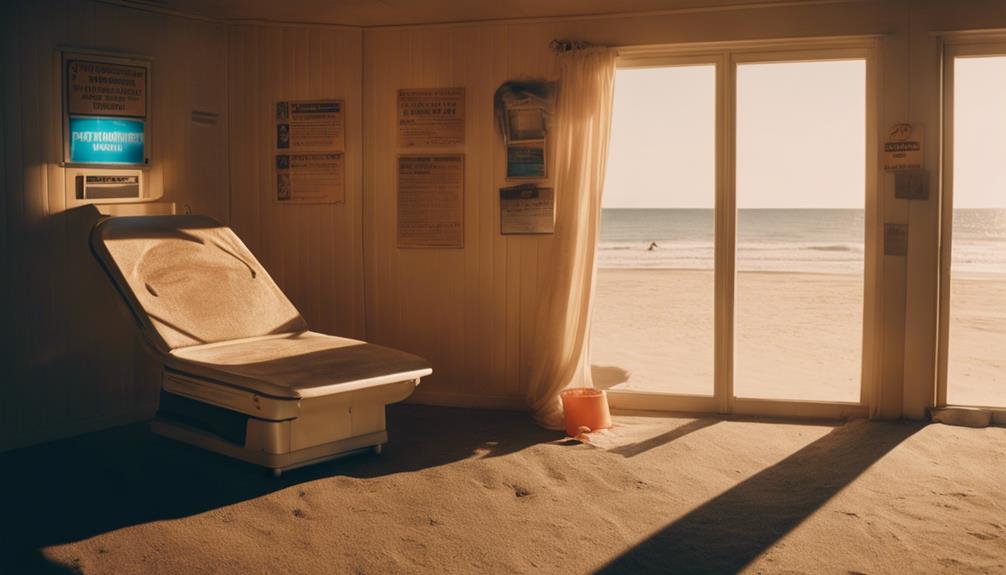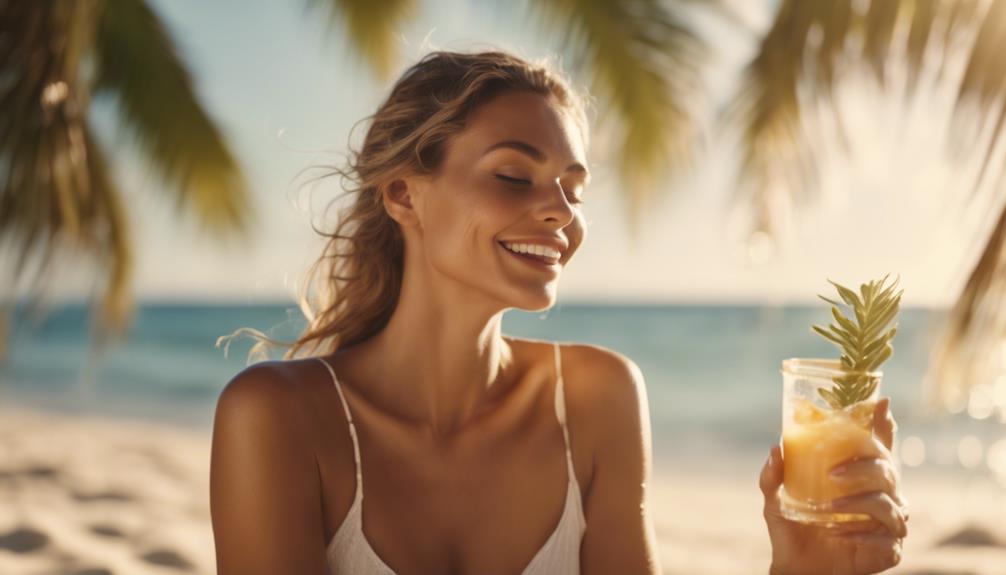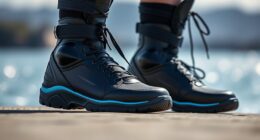Tanning beds might look tempting, but hold on! They blast you with way more UV rays than the sun, which can cause skin damage and crank up your risk of skin cancer, especially melanoma. Not fun, right? Plus, you gotta think about your eyes—those bright lights can lead to problems, so always wear those goofy-looking goggles! And hey, if you're really itching for that tan, why not try a self-tanner or a spray tan instead? They give you that glow without the risks. Stick around, and you'll discover more ways to keep your skin safe and still look fabulous!
Key Takeaways
- Tanning beds emit higher levels of UVA and UVB radiation, significantly increasing skin cancer risk, particularly melanoma.
- Always wear UV-blocking goggles to protect your eyes from harmful UV rays during tanning sessions.
- Limit tanning time and use broad-spectrum sunscreen to reduce the risk of burns and long-term skin damage.
- Regularly monitor your skin for changes, such as new or altered moles, to catch potential issues early.
Understanding UV Radiation
Understanding UV radiation is essential for making informed decisions about tanning bed use and protecting your skin from potential harm.
You've probably heard of UVA and UVB rays, but do you know what they actually do? UVA rays sneak in and can age your skin faster than you can say “sunburn,” while UVB rays are the ones that can burn you right away.
Tanning beds pump out these rays at levels way higher than the sun, so it's vital to know what you're getting into. You might think a tan looks great, but it's not worth risking your skin's health.
Skin Cancer Risks
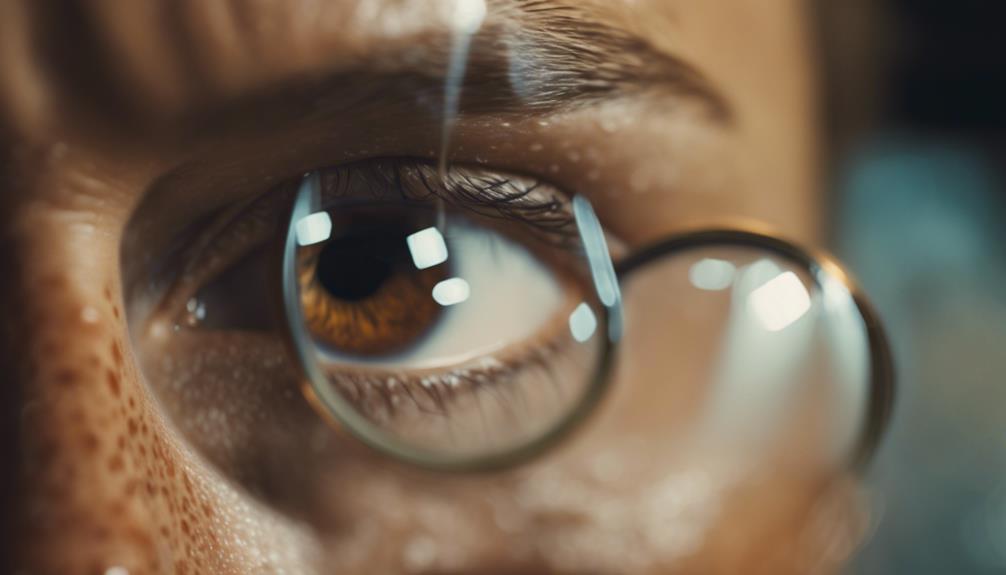
Frequent use of tanning beds greatly increases your risk of developing skin cancer, particularly melanoma, due to the intense UVA and UVB radiation they emit. Seriously, it's like playing with fire!
You might think you're just getting a nice tan, but those rays can cause long-lasting damage. The more you tan, the higher the risk. Plus, skin cancer isn't just a scary word; it can really mess with your life.
So, do you want to trade a healthy glow for a trip to the dermatologist? Not really, right?
Instead, consider safer alternatives like self-tanners or spray tans. They'll give you that sun-kissed look without the scary side effects. Your skin will thank you later!
Eye Protection Importance
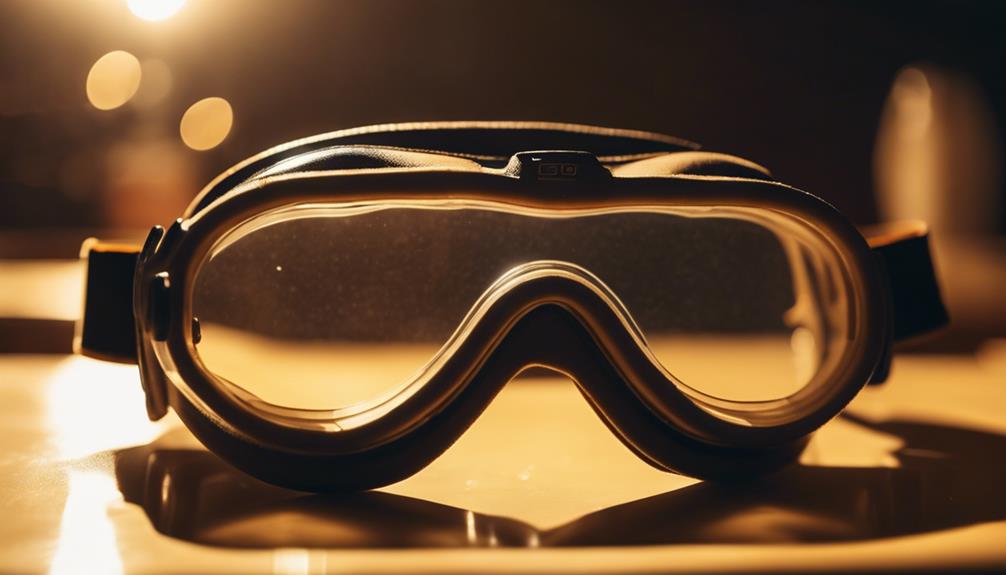
Protecting your eyes during tanning bed sessions is essential, as the intense UV radiation can lead to significant damage, including cataracts and other vision problems.
You wouldn't go into a snowstorm without goggles, right? So, why risk your eyes in a tanning bed? Always wear UV-blocking goggles designed for tanning.
It's a small step that makes a huge difference! Trust me, you don't want to squint your way through life. Plus, those bright lights can be blinding!
By keeping your eyes safe, you're not just protecting your vision; you're making sure you can enjoy all those sunny days ahead.
Safety Guidelines for Tanning
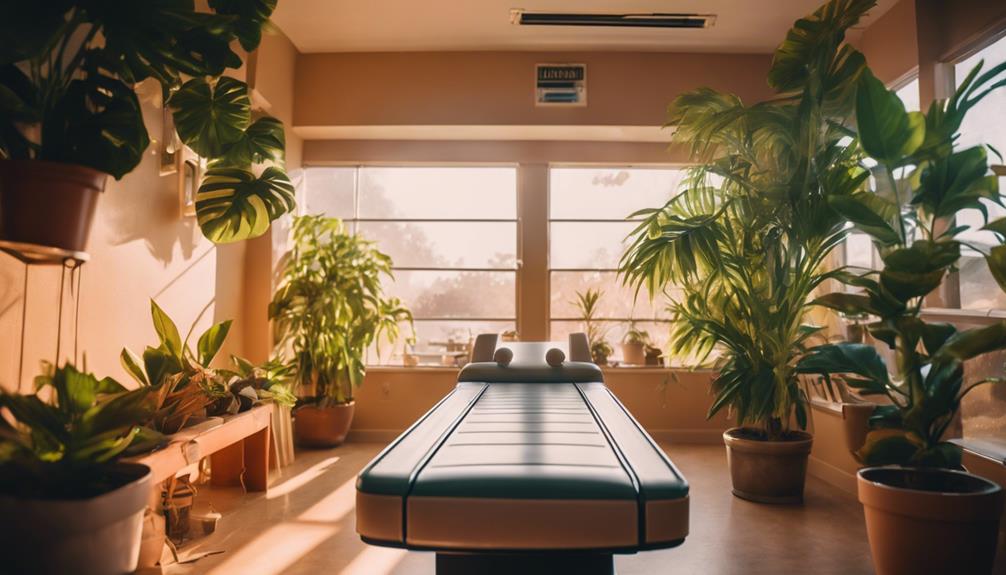
Safety during tanning sessions is essential to minimize the risks associated with UV exposure, ensuring a healthier glow without compromising your skin or overall well-being. So, let's keep it fun and safe!
Here are some quick safety guidelines to remember:
| Tip | Why It Matters |
|---|---|
| Always wear UV-blocking goggles | Protects your eyes from harmful rays |
| Limit your tanning time | Reduces risk of burns and skin damage |
| Use broad-spectrum sunscreen | Shields your skin before and after tanning |
Responsible Tanning Practices

When using tanning beds, it's crucial to adopt responsible practices to minimize risks while achieving a desired glow. You want that sun-kissed look, but safety first, right? Here are a few tips to keep your tanning game strong and smart:
Start slow: Gradually increase your tanning time to avoid burns. Trust me, no one wants to look like a lobster!
Stay hydrated: Drink plenty of water before and after your session. Your skin will thank you, and it helps maintain that healthy glow.
Use sunscreen: Always apply broad-spectrum sunscreen, even if you're tanning. It's like giving your skin a protective hug!
Monitoring Skin Health

Regularly monitoring your skin health is essential for catching any early signs of damage or changes that could indicate a problem.
Think of your skin as your body's biggest cheerleader; it deserves attention! Check for new moles, changes in size, or weird colors—those could be red flags.
Don't wait until your skin throws a tantrum! You should also keep an eye out for unusual dryness or irritation, which could mean you need to tweak your skincare routine.
And hey, while you're at it, make it a fun habit—grab a mirror, turn on your favorite tunes, and inspect your skin like a pro.
Your future self will thank you for being so proactive about skin health!
Exploring Alternative Options
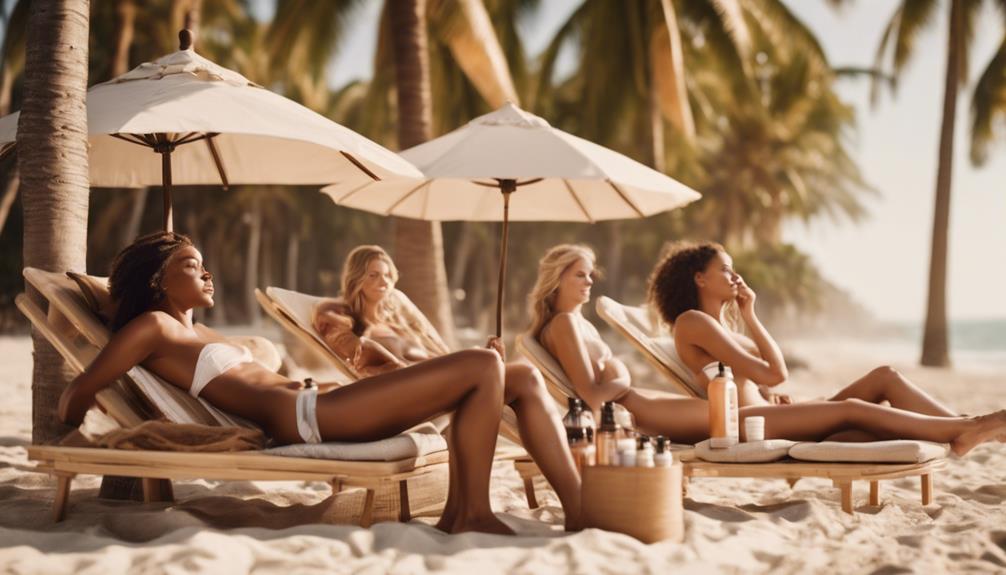
Keeping an eye on your skin health is important, and exploring alternative options for achieving a sun-kissed glow can help you minimize UV exposure while still looking radiant.
Why risk your skin when you can glow without the burn? Here are some fun ways to get that bronzed look:
- Self-tanner: Apply a natural-looking self-tanner for a streak-free glow that lasts for days.
- Bronzing lotion: Use bronzing lotions for a temporary tan that washes off in the shower.
Frequently Asked Questions
How Long Should I Wait Between Tanning Bed Sessions?
You should wait at least 48 hours between tanning bed sessions. This gives your skin time to recover and reduces the risk of overexposure. Always listen to your skin and adjust timing accordingly.
Can Tanning Beds Help With Acne Treatment?
You might think tanning beds can clear up acne, but that's a myth. While some UV exposure can temporarily improve certain skin conditions, it often worsens acne and leads to long-term skin damage.
What Are the Signs of Overexposure to UV Rays?
When you've overexposed your skin to UV rays, you might notice redness, swelling, blistering, or peeling. It could also lead to headaches, nausea, or fatigue. Pay attention to these signs to protect your skin.
Are There Specific Skin Types More Susceptible to Tanning Bed Risks?
If you're fair-skinned or have a lot of moles, you might find yourself more vulnerable to tanning bed risks. Your skin's sensitivity increases, making it essential to approach tanning with extra caution and care.
How Do Different Tanning Bed Brands Compare in Safety?
When comparing tanning bed brands, look for features like built-in safety mechanisms, adjustable UV levels, and reputable customer reviews. Prioritize brands that emphasize skin protection and offer clear safety guidelines for usage.
Conclusion
So, before you plunge into that tanning bed, remember: it's not just about looking golden; it's about staying healthy too!
Think of your skin as your favorite shirt—would you want it to fade and wear out?
By following safety guidelines and keeping an eye on your skin, you can rock that sun-kissed glow without risking your health.
Let's glow wisely, friends! Your future self will thank you for it, and your skin will still be ready to shine!

